During our “How We Remember” series, we’re exploring how memorialization is practiced throughout the world—across diverse geographic regions, cultures and religions. We want to explore how we are all connected in the universal experience of losing a loved one. Past articles in this series include:
- Cemetery Types in the United States
- All Saints' Day, All Souls' Day, and Día de los Muertos
- Festival of the Hungry Ghost
- Japan’s Obon Festival
Headstones serve as enduring memorials, marking the final resting places of loved ones in both burial and cremation practices. Over time, the use of headstones has evolved with cultural and religious beliefs shaping their significance.
While Christian and Jewish traditions have long associated headstones with burial, other cultures, such as Muslim, embrace a more humble approach without the use of headstones.
In this blog post, we delve into the rich history of headstones and their profound influence on funeral traditions and rituals across diverse cultures and regions.
The History of Headstones
Headstones, also known as gravestones or tombstones, were used to mark burial sites near homes, dating as far back as 3,000 B.C. It wasn’t until the mid-1600s that they became common in churchyards and cemeteries.
Originally, headstones were reserved for the middle and upper classes. However, when Protestant theology expanded, headstones became a staple of burial for all.
Until the 1900s, headstones served as the lid to a coffin, or the coffin itself, and a gravestone was placed over the actual grave. Some graves also contained footstones to mark the perimeter of the grave from head to toe.
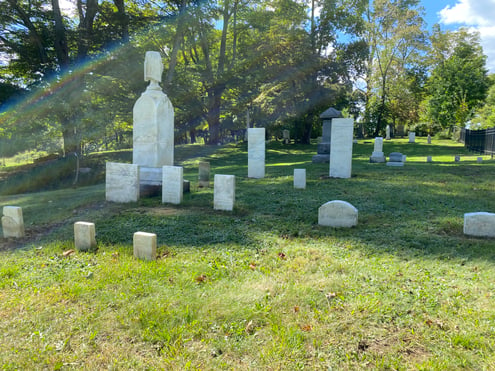
Now, all of these terms—headstones, memorials, grave markers, plus others—are used interchangeably to describe any type of marker placed at the head of a grave to memorialize someone who has passed.
>>> Related Resource: What Is the Difference Between Headstone, Tombstone and Gravestone?
Cultural and Religious Perspectives on Headstones
Headstones play an important part in religious ceremonies and traditions following a burial or cremation. While each religion has its own burial customs, one common quality is respect for the body.
In Jewish tradition, there are no strict guidelines regarding the size or type of marker or monument. However, cemeteries often have regulations in place. The marker typically includes:
- English and/or Hebrew names of the lost loved one.
- Birth and death dates.
- Family relationships.
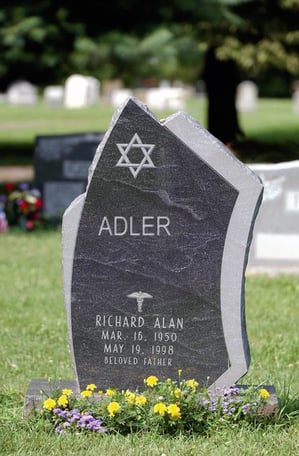
After the Kaddish mourning period, an unveiling ceremony is held within a year of the passing. Typically, Jewish memorials are covered with a cheesecloth that is not removed until this time. During this ceremony, loved ones also place small stones on the marker to indicate visits to the grave. 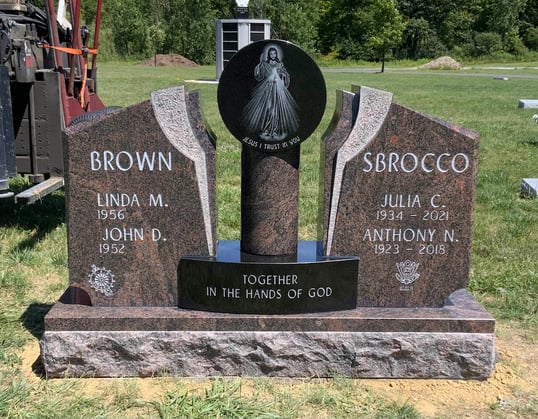
Christian families often find great comfort in placing religious images and words on their loved one’s headstone. In fact, some cemeteries even require a headstone to have at least one religious symbol on the marker. Popular images include angels and crosses, with accompanying text of shortened hymns or verses.
>>> Related Resource: Your Guide to Cultural Headstone Design Ideas
Headstone Materials in Different Eras and Regions
Throughout history, different cultures and regions have employed various materials for headstones. In North America, during the period between 1861 and 1873, wooden headstones were prevalent, serving as markers for the graves of Civil War soldiers. However, as time progressed, marble emerged as a favored choice, surpassing wood in durability and longevity.
Marble was the popular choice for headstones in Greece because of its ethereal beauty. However, it was eventually discovered that marble was not ideal for memorialization because of the softness of the stone.

Pictured: Wood, Marble, Granite
The Victorian era witnessed a shift in the popularity of headstone materials, with granite rising to prominence due to its exceptional durability. Even today, granite remains one of the most commonly used materials for headstones, alongside bronze.
During the 10th and 11th centuries, bronze was utilized in Egypt, France, Germany, Greece, India and Italy for creating enduring memorials.
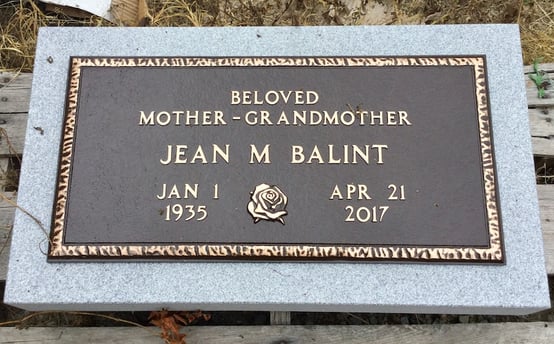
Cultural and Religious Symbols on Headstones
Symbols on headstones vary across cultures, representing meaningful connections to religion, culture and heritage. Some examples include:
- Anchor: A symbol of steadfastness, often used by early Christians as a disguised representation of the cross.
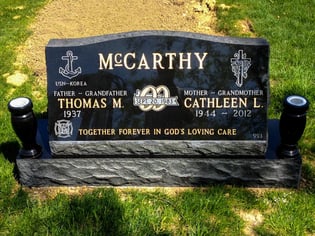
- Books or Scrolls: Signify faith, particularly for early evangelists.
- Angels: Depicted in various poses, angels hold individual meanings. An angel with open wings represents the soul's flight to heaven, while an angel carrying the lost loved one symbolizes their escort to the afterlife. A weeping angel symbolizes grief, particularly for unexpected deaths. An angel blowing a trumpet can represent the Day of Judgment in Christianity.
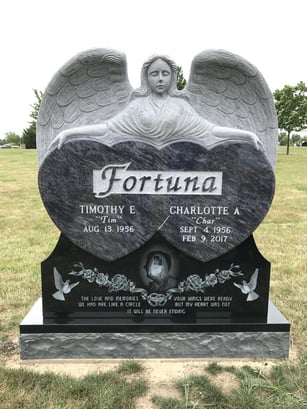
- Animals: For instance, a lion is often found on Jewish headstones, symbolizing bravery and protecting the grave from unwanted spirits.
- Dharma Wheel: Asian cultures incorporate symbols like the Dharma wheel, which signifies the quest for enlightenment in Buddhism. The lotus flower represents beauty and detachment in Hinduism.
- Stars and Crescents: Although the Quran opposes images or symbols, the star and crescent have become a working symbol of Islam, symbolizing the connection of the lost loved one with the Islamic faith.
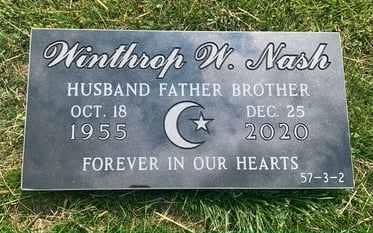
Headstone Shapes, Sizes and Styles Across Different Cultures
In some cultures, headstones are flat and flush, and cover the entire length of the grave horizontally, whereas in others, the headstone generally sits vertically.
Upright headstones, for example, are the most common memorial variety in New Zealand. The concept is said to stem from Egyptian Stelae, which were vertical slabs placed outside of tombs and inscribed to indicate the requirements for reprovisioning of the tomb.
Most Sephardic Jewish gravestones are horizontal, rectangular slabs. They often have angelic figures and biblical images on them. Other common markers among various cultures today include, but are not limited, to:
- Lawn-level.
- Bevel.
- Slant.
- Upright.

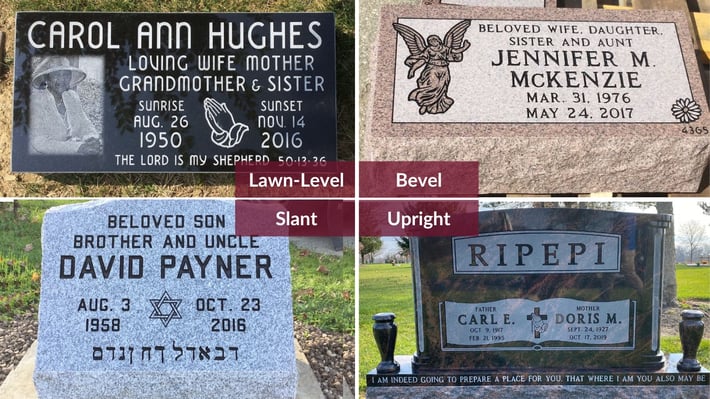
Each represents the permanence of a person’s legacy, which helps surviving family members and friends cope with the difficult mourning process, as they have a place to visit their loved one.
Join Us on Our Journey to Remember
We publish weekly articles about memorialization, with the goal of helping families remember and honor their loved ones. Subscribe to our blog for future resources and articles.





